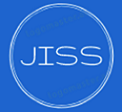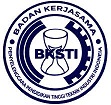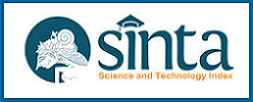Analysis of mental workload during exams in hybrid learning in the new normal era post-pandemic
Abstract
Keywords
Full Text:
PDFReferences
A. Owusu-Boampong and C. Holmberg, “Distance education in European higher education: The potential,” UNESCO Digit. Library, 2015. [Online]. Available: https://unesdoc.unesco.org/ark:/48223/pf0000235170
J. B. Oyadeyi, “An assessment of computer anxiety among distance learning freshmen in Southwestern Nigeria,” KIU J. Soc. Sci., vol. 4, no. 2, pp. 151–159, 2018.
L. L. Alaydrus and D. Nusraningrum, “Awareness of workstation ergonomics and occurrence of computer-related injuries,” Indian J. Public Health Res. Develop., vol. 10, no. 11, pp. 3305–3309, 2019, doi: 10.5958/0976-5506.2019.04091.9.
M. Barattucci, “Predicting learning outcomes in distance learning universities: Perspectives from an integrated model,” Commun. Comput. Inf. Sci., vol. 1091, pp. 30–40, 2019, doi: 10.1007/978-3-030-31284-8_3.
S. Susanto and A. G. Azwar, “Analysis of online learning fatigue level during Covid-19 from the aspect of mental workload,” J. Techno-Socio Ekonomika, vol. 13, no. 2, pp. 102–112, 2020.
Y. Juniardi, Ed., Academic Guidelines of Sultan Ageng Tirtayasa University, 2nd ed., vol. 2, S. Suhendar, A. Mulyaningsih, and R. O. Khastini, Eds. Task Force Team, 2021.
V. Anggrani, “Analysis of mental burden of students of the Faculty of Engineering, UMS during online learning during the pandemic using the rating scale mental effort (RSME) method,” M.S. thesis, Muhammadiyah Univ. Surakarta, Surakarta, Indonesia, 2021.
N. D. Agustina, “Measuring mental burden and fatigue of students during online learning during the pandemic using the NASA-TLX and SOFI methods,” M.S. thesis, Muhammadiyah Univ. Surakarta, Surakarta, Indonesia, 2021.
A. Umyati, W. Susihono, and A. S. Mariawati, “Measurement of psychological impact of industrial engineering students in fulfilling online learning outcomes using NASA-TLX method,” IOP Conf. Ser.: Mater. Sci. Eng., vol. 909, no. 1, p. 012064, 2020, doi: 10.1088/1757-899X/909/1/012064.
N. D. Agustina, “Measuring mental burden and fatigue of students during online learning during the pandemic using the NASA-TLX and SOFI methods,” B.S. thesis, Muhammadiyah Univ. Surakarta, Surakarta, Indonesia, 2021.
A. R. A. Nalendra, Y. Rosalinah, A. Priadi, and R. Lestari, Eds., Basic Series Statistics with SPSS. Indonesian Sci. Media, 2021.
S. Susanto and A. G. Azwar, “Analysis of online learning fatigue levels during Covid-19 from the aspect of mental workload (case study of Sangga Buana University students),” J. Techno-Socio Econ., vol. 13, no. 2, pp. 102–112, 2020.
S. G. Hart and L. E. Staveland, “Development of NASA-TLX,” in Human Mental Workload, vol. 52, P. A. Hancock and N. Meshkati, Eds. Amsterdam, The Netherlands: North-Holland, 1988, pp. 139–183.
P. A. Hancock and N. Meshkati, Eds., Human Mental Workload, vol. 52. Amsterdam, The Netherlands: North-Holland, 1988, doi: 10.1016/S0166-4115(08)62386-9.
S. A. Y. Hardianti, C. Triwibisono, and F. N. Nugraha, “Workload design and employee needs of production floor division using NASA-TLX method in PT XYZ,” E-Proc. Eng., vol. 6, no. 2, pp. 6679–6686, 2019.
S. Fauzi, “Mental workload analysis using NASA-TLX method to evaluate operator workload on production floor of PT. PP. London Sumatra Indonesia Tbk,” B.S. thesis, Medan Area Univ., Medan, Indonesia, 2017.
K. Dewi, Suryani, and A. Yamin, “Mental workload of lectures,” J. Nurs. Care, vol. 2, no. 3, pp. 167–177, 2019.
Jimmy, L. Widodo, and I. Sukania, “Ergonomic analysis of mental workload of junior high school students during offline and online learning,” Mitra Teknik Industri J., vol. 1, no. 1, pp. 9–23, 2022.
C. C. Fenyvian, S. Uslianti, and R. Rahmahwati, “Measurement of mental workload and fatigue level using NASA-TLX and SOFI methods on employees of PT. XYZ,” TIN J. Tanjungpura Univ., vol. 4, pp. 58–63, 2020.
I. T. Salsabila, L. Ismayenti, and H. Hastuti, “Relationship between mental workload and job stress in hybrid system learning in elementary school teachers in Cilacap village,” Proc. Ser. Health Med. Sci., vol. 4, pp. 65–70, 2023.
E. Ebenezer Afrifa-Yamoah, E. Adama, A. Graf, and Kwadwo Adusei-Asante, “Assessment Design and Practices toward Holistic Learning of Higher Education Students: Empirical Evidence via Path Analysis Modelling Approach.,” Journal of the Scholarship of Teaching and Learning, vol. 24, no. 3, pp. 52–67, 2024, Accessed: May 27, 2025.
A. Skulmowski and K. M. Xu, “Understanding Cognitive Load in Digital and Online Learning: a New Perspective on Extraneous Cognitive Load,” Educational Psychology Review, vol. 34, no. 1, pp. 171–196, Jun. 2021, doi: 10.1007/s10648-021-09624-7.
L. Arasyah Sesario Silalong, S. Sari, Dimas Arfianto, Imam Pujiyanto, and Dewi Hermiyanti Hanifah, “Analysis of mental workload final year students due to online learning with NASA-TLX method,” HEARTY, vol. 12, no. 2, pp. 301–314, Mar. 2024, doi: 10.32832/hearty.v12i2.5458.
S. Chan, S. Bax, and C. Weir, “Researching the comparability of paper-based and computer-based delivery in a high-stakes writing test,” Assessing Writing, vol. 36, pp. 32–48, Apr. 2018, doi: 10.1016/j.asw.2018.03.008.
K. Lee and M. Fanguy, “Online exam proctoring technologies: Educational innovation or deterioration?,” British Journal of Educational Technology, vol. 53, no. 3, pp. 475–490, Jan. 2022, doi: 10.1111/bjet.13182.
Y. Tang, H. Tseng, and X. Tang, “The impact of information-seeking self-efficacy and online learning self-efficacy on students’ performance proficiency,” The Journal of Academic Librarianship, vol. 48, no. 5, pp. 102584–102584, Jul. 2022, doi: 10.1016/j.acalib.2022.102584.
W. Villegas-Ch., X. Palacios-Pacheco, M. Roman-Cañizares, and S. Luján-Mora, “Analysis of Educational Data in the Current State of University Learning for the Transition to a Hybrid Education Model,” Applied Sciences, vol. 11, no. 5, p. 2068, Feb. 2021, doi: 10.3390/app11052068.
E. Dodd, S. Singh, J. Micsko, K. Austin, C. Morison, and S. Upton, "Equalizing and widening access to higher education during a pandemic: Lessons learned from a multi-university perspective," Student Success, vol. 12, no. 3, pp. 58-72, 2021, doi: 10.3316/informit.154275334454214.
D. Hass, A. Hass, and M. Joseph, "Emergency online learning & the digital divide: An exploratory study of the effects of COVID-19 on minority students," Marketing Education Review, vol. 33, no. 1, pp. 22–37, 2023, doi: 10.1080/10528008.2022.2136498.
R. Hamid, “Exploring the Effectiveness of Hybrid Learning Models in Higher Education Post-Pandemic,” International Journal of Post Axial: Futuristic Teaching and Learning, pp. 177–191, 2024, doi: 10.59944/postaxial.v2i3.386.
DOI: http://dx.doi.org/10.62870/jiss.v11i1.21976
Refbacks
- There are currently no refbacks.
 is supported by
is supported by








